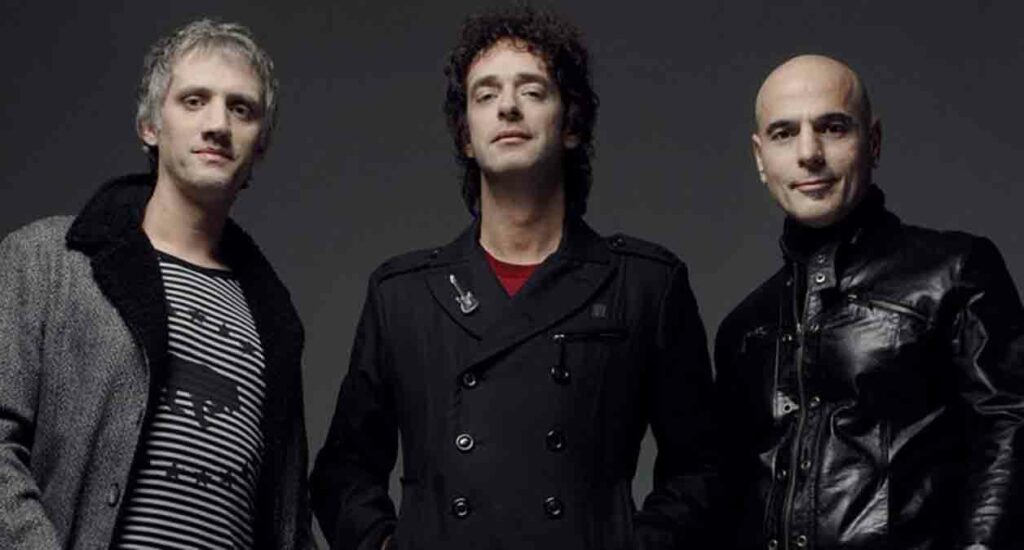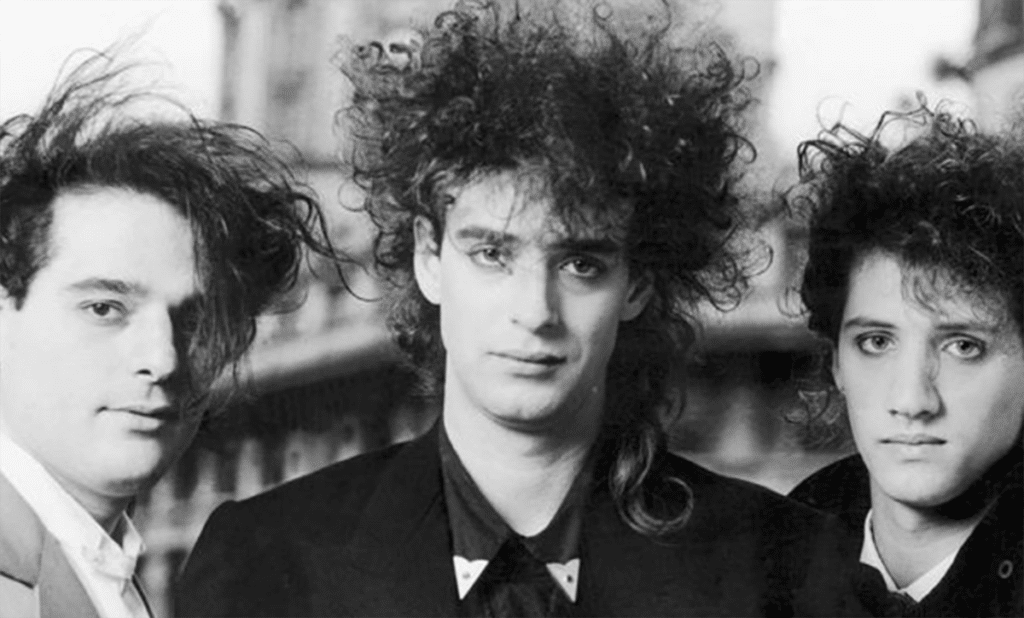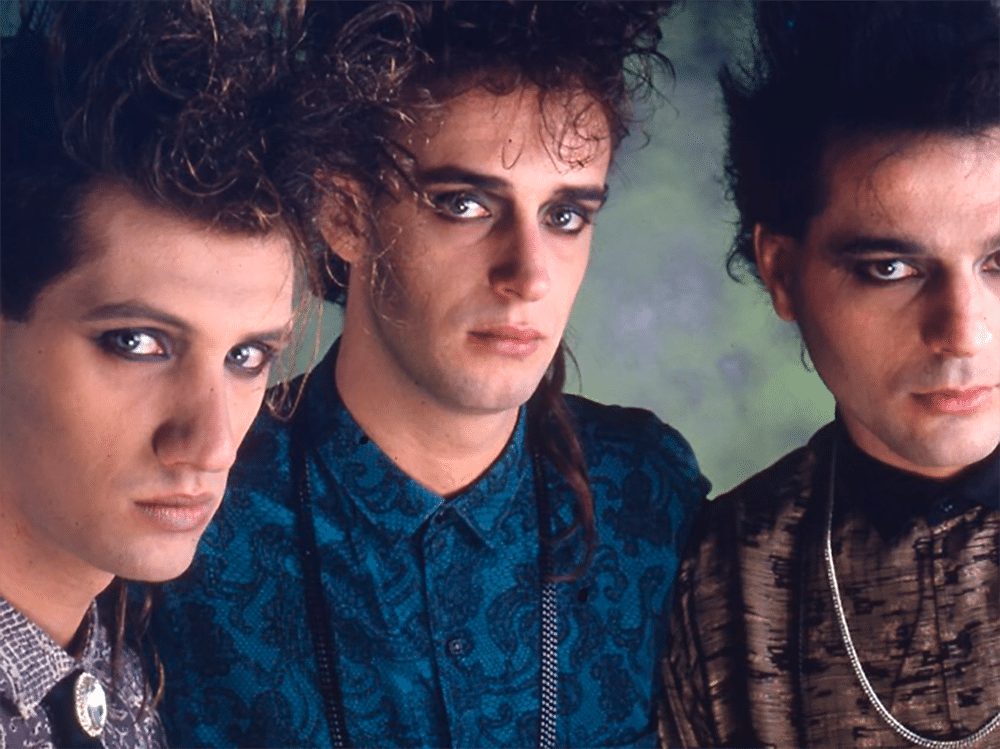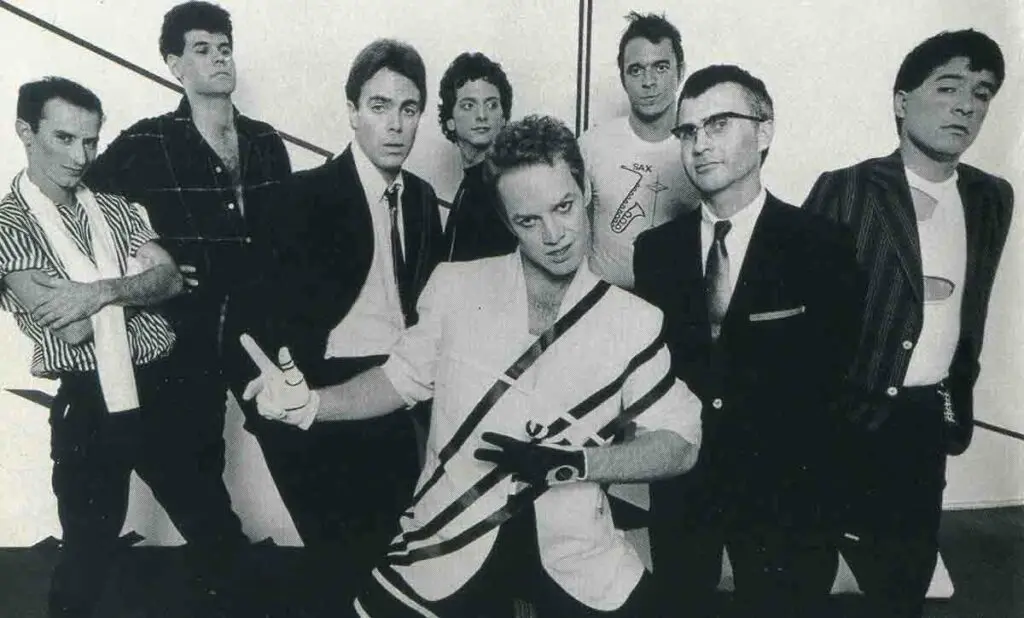In the 80s of the 20th century, almost 6 million listeners considered themselves fans of Soda Stereo. They wrote music that everyone liked. There has never been a more influential and important group in the history of Latin American music. The permanent stars of their strong trio are, of course, vocalist and guitarist Gustavo Cerati, "Zeta" Bosio (bass) and drummer Charlie Alberti. They were unchanged.
The merits of the guys from Soda Stereo
Sodi's four full-length albums have been nominated for the full list of the best Latin rock records. In addition, the excellent song "De Musica Ligera" is the fourth in the list of the best compositions in the Latin and Argentine ratings.
MTV also adequately appreciated the work of the musicians, in 2002 honoring them with the "Legend of Latin America" award. In addition, Soda Stereo is the best-selling rock band, many people wanted to attend their concerts, their albums were sold out in an instant. So, the figure of 17 million albums over 15 years speaks of the quality of their compositions. What is their success? Perhaps in good music, correct original promotion and professional attitude to business.

Creation of the Soda Stereo group
So, two talented guys - Gustavo and Hector met in 1982. Interestingly, each of them already had their own group. But they really liked to compose something in common, the guys had similar views on music.
Thus was born the idea of a collaborative punk rock band, somewhat similar to The Police and The Cure. Only in their native language and more original in their performance. Later, young Charlie Alberti also joined the company. He joined after they heard that the guy plays drums no worse than his father, the famous Tito Alberti.
Difficult name choice
For some time, the musicians could not decide on a name, changing Aerosol to Side Car and others. Then the song "Stereotypes" gave the same name for a while. By this time, there were three quite solid executable compositions. However, all the same, neither the performers nor the audience liked it very much.
Later, variants of the names "Soda" and "Estéreo" came, which formed the combination we know. In general, the group has always paid a lot of attention to the image and appearance. Even at the beginning of her activity, she tried to record clips, albeit at her own expense.
Lineup of Soda Stereo
For the first time under a new name, they presented themselves at a party in honor of the birthday of their university friend. His name was Alfredo Luis, and he subsequently became the director of most of their videos, carefully thought out the appearance of the guys and the design of the stage. So by right it can be considered the fourth in their team.
In addition, for some time Richard Coleman joined them as a second guitarist. Unfortunately, his performance only made the compositions worse, so he self-critically retired. Thus, the composition of the team was fully completed and reduced to three.

Musical development, first fame
Decently merging into the musical life of Buenos Aires, the group wrote all new compositions and performed with them. So, most often they could be seen in the famous legendary cabaret club "Marabu". Interestingly, some of the classic songs that were often heard at that time were not recorded.
The group continued to engage in creativity, the second demo album of the group was performed on the popular Nine Evenings program, making them even more famous. They were invited to perform everywhere. So, they met Horacio Martinez, who was engaged in the "promotion" of aspiring stars. He was quite impressed with their music and helped a lot with the promotion. Their collaboration continued until mid-1984.
How to increase popularity (recipe from Soda)
Realizing that the future lies with the clips, Alfredo Luis offered to shoot it at the general expense, even if it was modest. His idea - clip to disc - was considered insane in those days, but he clearly had a flair. The group trusted him in everything, from appearance to promotion. Of the best Soda songs, they chose "Dietético". Filmed on cable TV. Later, it was also promoted on the air of the Música Total program on Canal 9.
Recording the first album
The debut album of the same name was released and created with the help of Morois, who acted as the producer of the guys (although he was the vocalist of another). Two guest musicians participated in the work. The guys accompanied with keyboards and saxophone. They are Daniel Melero and Gonzo Palacios.
To further promote the first album, the guys played a special performance with the help of the Ares agency. Shows like this were new back then. The venue was the popular chain of eateries Pumper Nic.

In the video and in the location of its shooting, the name and meaning of the song were symbolically played up. Reviews for the original show were upbeat and positive. The group gained even more popularity. The growth of the group's fans was instantaneous and fast.
First big stage
The first performance on the big stage was also original. So, Alfredo Luis designed it in a very unusual way. Strong smoke plus a large number of untuned TVs (with "ripples") made people talk about Soda. It was there that the first disc was performed completely “live”.
Then the keyboard player Fabian Quintero appeared in the group. Soda changed the agency they were working with. The group developed by taking part in rock festivals "Rock In Bali de Mar del Plata" and "Festival Chateau Rock '85". It was here that the group performed in front of large masses of people, showing their creativity.
The music, the ideas of punk, the novelty in the air - all this could appeal to young people. They then returned to Buenos Aires to record their second album, Nada personal.
The second album is a complete victory
The second work in a large stadium was listened to by more than 20 fans. After concerts with the songs of the second album and a big tour of the Argentine tourist centers, the fame grew. A documentary was also made about the guys.
So, their disc first became gold, and then platinum. These are excellent quality lyrics and music, and it was a sign of the complete victory of Stereo Soda.
A large Latin American tour of the group took place in 1986-1989. This was still happening as part of the presentation of the second work. The group performed in Colombia and Peru, as well as in Chile with unprecedented success.
Longing for good music, the fans did not allow the musicians to pass, and they were forced to hide, like the Beatles. Mass hysteria, fainting accompanied performances everywhere. Later, the musicians themselves would call this period "crazy".
Third album "Signos"
But, as always, with the advent of fame, problems began. At one of the performances, as a result of a stampede, 5 people died, and many were injured. Later, in their speeches, they almost did not light the stage as a sign of mourning. The more positive moments there were, the more the tension in the group grew.
In 1986, the team presented the world with a third work - "Signos". It included the composition of the same name and such a hit as "Persiana Americana". It was a compilation of Argentine rock tracks in CD format. It was later certified platinum in Argentina, triple platinum in Peru and was certified double platinum in Chile. The new disc was produced together with Carlos Alomar, the producer of many music stars.
Final Soda Stereo
In December 1991, there was a historic solo concert, free of charge, in Buenos Aires. According to sources, the audience was from 250 to 500 thousand. That is, more than even the famous Luciano Pavarotti collected. It was this performance that showed the band that they had achieved everything that was possible.
Latin American fame was so high that it made no sense to go somewhere further. Then there was the album "Dynamo", the sixth tour and a break. Then the album "Stereo - dream" (1995-1997). The band members took a break to take a break from activities. Everyone got the right to engage in an individual project.
Final breakup
In 97, the Soda Stereo collective announced in an official press release that they were no longer active. Gustavo even created a "farewell letter" to the newspaper, where he described the impossibility of further joint work and the general regret of all the musicians. Many times since then, false rumors about the band's reunion have delighted fans. They are very annoying musicians.
In the history of rock, it often happens that a disbanded group gathers for the last and only concert. This is what happened with Soda Stereo. In 2007 - a decade after parting - the guys joined for the last tour, romantically called "You'll see - I'll be back." It has become unforgettable for the fans.
Band Magic
The group was and remains a legend covered with glory. Their songs are always a pleasure to listen to. What is the magic of Soda Stereo? They were born of the optimism of Argentina's democracy at that time, when many promising musical groups were being created.
Their value is that they discovered the idea of Latin American rock itself, which, in fact, did not exist before them. This is the good old classics of rock, which will never be forgotten and which is always pleasant to listen to. They expressed a look at the music of their generation. At the same time, they were not a purely Latin American group, performing music that was understandable to everyone.



